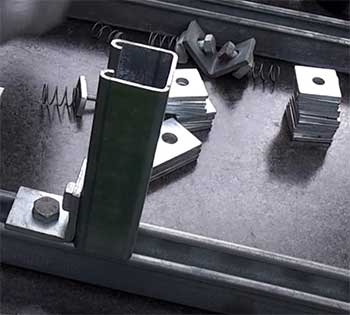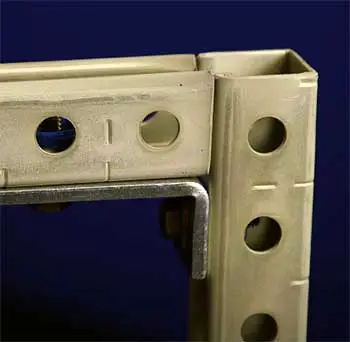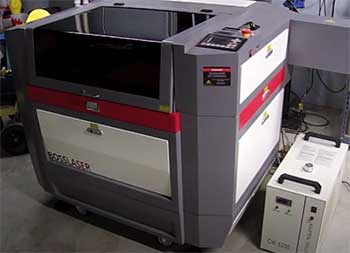A strut channel is a kind of structural system that is widely used in the construction and electrical industries. Their main usage lies in supporting wiring, plumbing, and other mechanical components.
These kinds of channels are widely used in air conditioning and other ventilation systems. Strut channels are often referred to by different brand names.
Strut channels are most commonly made of metal sheets folded on top of each other until it becomes an open channel shape with inwards curving lips.
The two most widely used struts are Kindorf and Unistrut. To know just how they compare, keep on reading.
A Quick Comparison Table
| Specification | Kindorf Strut Channel | Unistrut Strut Channel |
| Founded In | Founded in 1938 by Harry L. Kindorf | Founded in 1924. Been in service for over 95 years. |
| Industries used in | Widely used in the electric, mechanical, and plumbing industries | Widely used in the electric, mechanical, and plumbing industries |
| Materials Used To Make The Struts | Regular steel with an electroplated finish and stainless steel | Regular steel, stainless steel, and aluminum |
| Amount of Weight That Can Be Supported | From 480 pounds, up to 680 pounds | From 680 pounds, up to 1,130 pounds |
| Ease of Installation | Very easy to install and modify. No drilling or welding is necessary. | Very easy to install and modify. No drilling or welding is necessary. |
| Price of Strut Channel | From 86.56 dollars up to 415.46 dollars depending on the material, length, and gauge | From 19.06 dollars up to 150.18 dollars depending on the material, length, and gauge |
In-depth Comparison of Kindorf And Unistrut
Strut channels are very important in many industrial, mechanical, and electrical fields. All of these fields often involve overhead piping, wiring, and other mechanical structures.

All these structures cannot stay freely on top.
They need some sort of structural support system. This is where strut channels come in.
Not only do they provide a strong and stable structural system for pipes and wires.
But they also protect the pipes and wires from any damage from external sources.
The most common material used in strut channels is steel as it is both strong and widely available.
However, steel rusts easily. In such a case, many companies also produce stainless steel channels.
There are also aluminum strut channels available when you need a structural system for lighter loads. Some companies also produce fiberglass strut channels as they are completely resistant to corrosion.
After going through the comparison table, you should have a pretty good idea about all the characteristics and differences between the two different strut channels.
Now, let’s go a bit more in-depth into the characteristics of the strut channels and really break down and analyze each different characteristic of Unistrut and Kindorf strut channels separately.
- When Were The Companies Formed?
Kindorf was formed in the year 1938. It was founded by Harry L. Kindorf. On the other hand, Unistrut was founded a bit earlier than Kindorf.
Unistrut came into being in the year 1924. They have been a leading brand in the market for over 95 years.
- The Industries The Strut Channels Are Used In
Strut channels are widely used in many industrial, mechanical, and electrical fields. Their main usage is as a strong and stable support system for wires, cables, pipes, etc.
As such, strut channels are an essential component in plumbing, air conditioners, and other ventilation system installations.
Kindorf and Unistrut are both among the most widely used strut systems used in the electrical, mechanical, and plumbing industries.
In fact, both brands are so popular, they have become synonymous with strut channels. Many people often refer to any kind of strut channel system as Kindorfs and Unistruts.
- Materials Used To Make The Struts
The most commonly used material in strut channel systems such as Kindorf and Unistrut is steel. The reason for this is steel is both strong and durable while also being readily available and cheap.

However, since strut channels are often used in plumbing and ventilation systems, the struts come into regular contact with water.
If they are made of steel, they have a very high chance of being corroded or becoming rusty.
To avoid this, both Kindorf and Unistrut also produce and sell strut channels that are made of stainless steel.
These channels are far more resistant to corrosion and rust than regular steel.
Unistrut also develops and sells strut channels that are made of aluminum. Aluminum strut channels are better to support lighter materials than steel.
- Amount of Weight That Can Be Supported
Kindorf strut channels can handle weights between From 480 pounds and 680 pounds depending on the material, length, and gauge of the strut.
On the other hand, Unistrut has a much higher weight capacity than Kindorf.
Unistrut strut channels can handle weights between From 680 pounds and 1,130 pounds depending on the material, length, and gauge of the strut.
- Ease of Installation of The Strut Channels

Strut channels in general are used in more heavy-duty fields.
Usually, in order to properly install strut channels, you would need power tools such as drills and welders.
That is not the case for Kindorf and Unistrut channel systems.
Both of these can be easily installed by anyone, even if you do not have any technical knowledge about them.
To install Kindorf or Unistrut channel systems, all you need are hand tools like screwdrivers and wrenches.
- Price of Strut Channels
Kindorf channels go from 86.56 dollars up to 415.46 dollars depending on the material, length, and gauge.
Unistrut channels go from 19.06 dollars up to 150.18 dollars depending on the material, length, and gauge.
Which Strut Channel Should You Use?
We now come to the ultimate question that most of you were seeking the answer to from this article. Which strut channel should you choose for whatever project you need it for?
The answer to that question depends entirely on your needs and preferences. They are both very easy to install and assemble.
Since no drilling or welding is necessary, all you need are regular hand tools such as screwdrivers and wrenches.
Unistrut channels have a higher maximum and minimum weight making them better for supporting heavier materials.
On the other hand, Kindorf strut channels have a lower maximum and minimum weight capacity. So, if you want a support system for lighter materials, you should go for Kindorf instead.
Take all these into account before you make your final decision.
Frequently Asked Questions (FAQ)
Provided below are some frequently asked questions related to strut channels, Kindorf, and Unistrut.
Strut channels in general are often referred to by different brand names such as Unistrut, Kindorf, Superstrut, etc.
Kindorf strut channels are used as support structures to hold up things such as pipes and wires.
Unistrut channels can handle weights between 680 pounds and 1,130 pounds depending on the material gauge and length.
Power-Strut channels are very similar in design, color, and size to Unistrut channels. They differ in shape from Unistrut only in that the inturned edges of the latter are beveled, as compared with the flat or rounded edge of Power-Strut.
Wrapping Things Up
Strut channeling systems are incredibly important in many industrial, electrical, and mechanical fields. Strut channels provide dual benefits when they are used.
They not only provide a strong and stable structure for wires, cables, and pipes, but they also protect them from any external sources of damage.
Unistrut and Kindorf channels are appropriate for both heavy-duty usages as well as smaller DIY projects due to their ease of installation.
Hopefully, this article on Kindorf Vs. Unistrut gave you all the information you were looking for.

